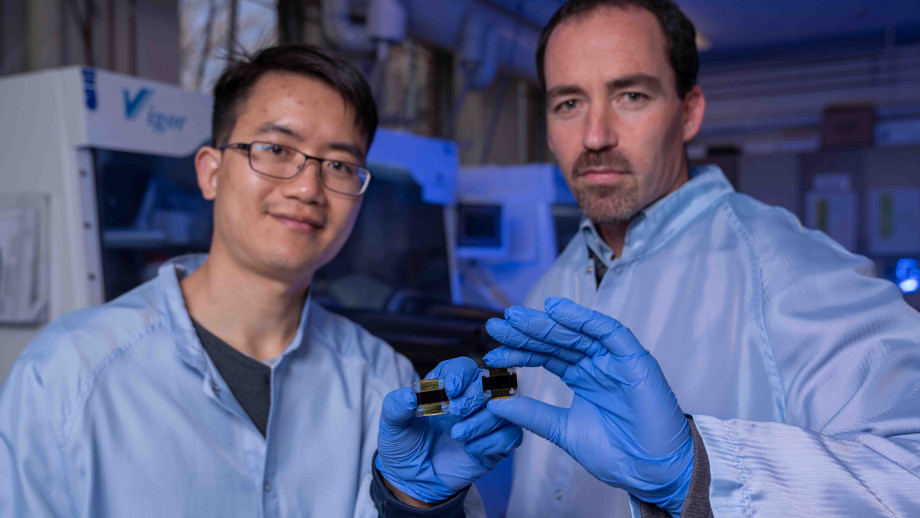A team of researchers at the Australian National University say they have broken their own record for most efficient perovskite solar cell in one centimetre squared, reaching 22.6%. However, little over a week ago a group of scientists at the Swiss Federal Institute of Technology Lausanne (EPFL) achieved an efficiency of 25.7% on a perovskite solar cell. While that efficiency dropped to 23.3% when the surface of the solar cells was increased to 1cm2, the Swiss cell still appears to be able to convert more efficient.
ANU study
The Australian National University (ANU) team published their study in Nature on January 26, highlighting in the paper’s title that their cell had a “fill factor,” a measure of the cell’s quality, of more than 86%.
Alongside this high fill factor, the team, led by Dr Jun Peng, say they reached the improved cell efficiency level after opting to use standard fabrication techniques applied to a new material, titanium oxynitride. The team also detected energy loss in one of the layers of their earlier perovskite solar cell designs, an issue they fixed prompting an efficiency boost.
ANU says its new cells are not only able to convert more light to electricity, but are also easier to manufacture – noting affordability as crucial for commercialisation.
Perovskite solar cells
Perovskites are a family of materials with a specific crystal structure and have shown potential for high efficiency and low production costs when used for solar cells. Though scientists have been able to reach high cell efficiencies using perovskite materials, the specific mechanisms allowing for these is not fully understood, with research to date showing what is going on inside the material is quite to different to crystalline silicon and other common PV cell materials.
Moreover, perovskite solar cells have proven unstable when scaled up to mass production, leading to various defects, and the high efficiencies achieved in laboratories cannot be easily reproduced when transferred to production lines.
Swiss solar cell record
Less than a week before the ANU study was published in Nature, the journal Science published a paper on quantum dots being used in perovskite solar cells to achieve a power conversion efficiency of more than 25% alongside high operational stability.
A group of scientists led by Michael Graetzel from the the Swiss Federal Institute of Technology Lausanne (EPFL) and Dong Suk Kim from the Korea Institute of Energy Research explained in the study that the titanium dioxide electron transport layer of the perovskite cells had been replaced by a thin layer of tin (IV) oxide quantum dots stabilised with polyacrylic acid. This improved the light-trapping capacity of the cells while suppressing non-radiative recombination, which has hitherto hampered efficiency, wrote Sandra Enkhardt for pv magazine Germany.
With the layer of quantum dots, higher efficiencies could also be transferred to larger cell formats, with the team reporting efficiencies of 23.3%, 21.7% and 20.6% when the surface of the solar cells was increased to 1, 20 and 64 square centimetres.
Whichever research institute holds the record, there can be no doubt there is massive interest in realising the promises of perovskite solar cells among the global science community. Onwards and upwards!
This content is protected by copyright and may not be reused. If you want to cooperate with us and would like to reuse some of our content, please contact: editors@pv-magazine.com.









By submitting this form you agree to pv magazine using your data for the purposes of publishing your comment.
Your personal data will only be disclosed or otherwise transmitted to third parties for the purposes of spam filtering or if this is necessary for technical maintenance of the website. Any other transfer to third parties will not take place unless this is justified on the basis of applicable data protection regulations or if pv magazine is legally obliged to do so.
You may revoke this consent at any time with effect for the future, in which case your personal data will be deleted immediately. Otherwise, your data will be deleted if pv magazine has processed your request or the purpose of data storage is fulfilled.
Further information on data privacy can be found in our Data Protection Policy.